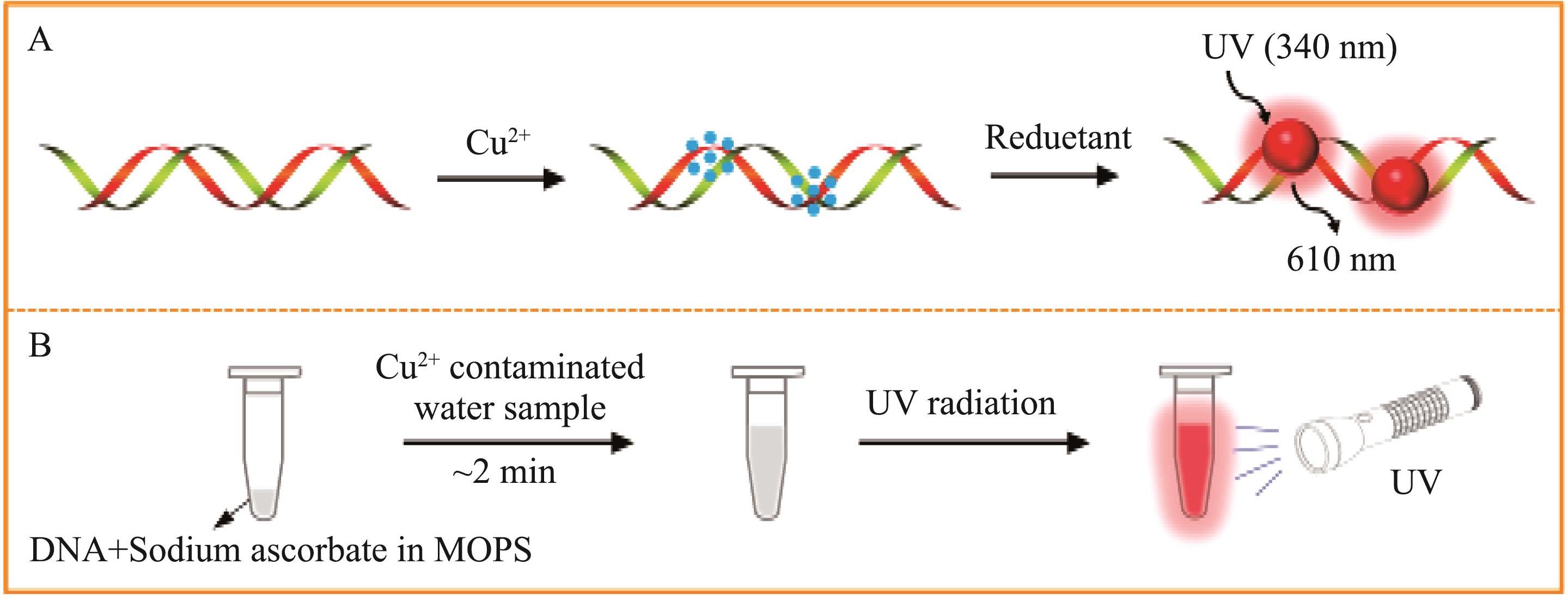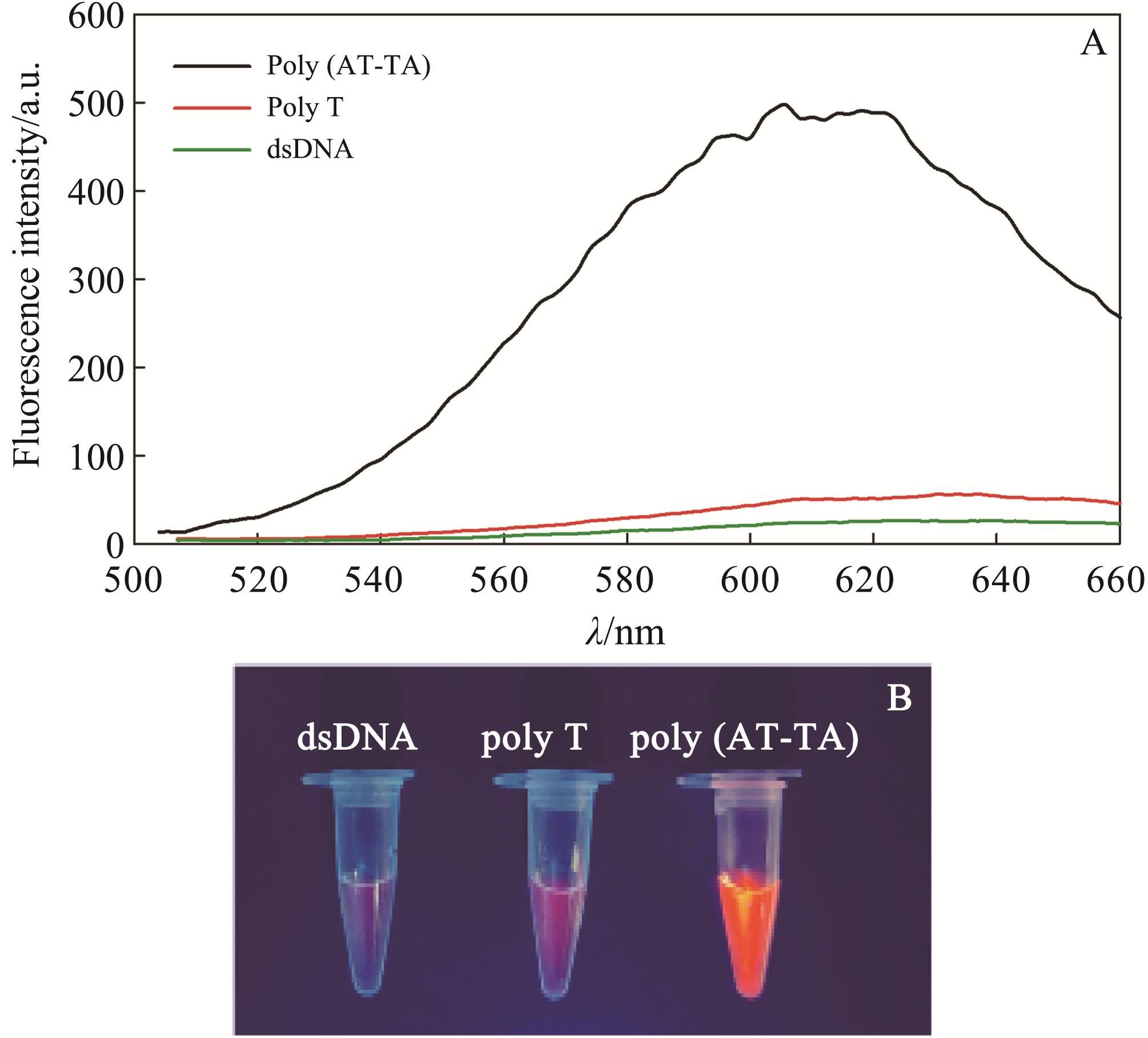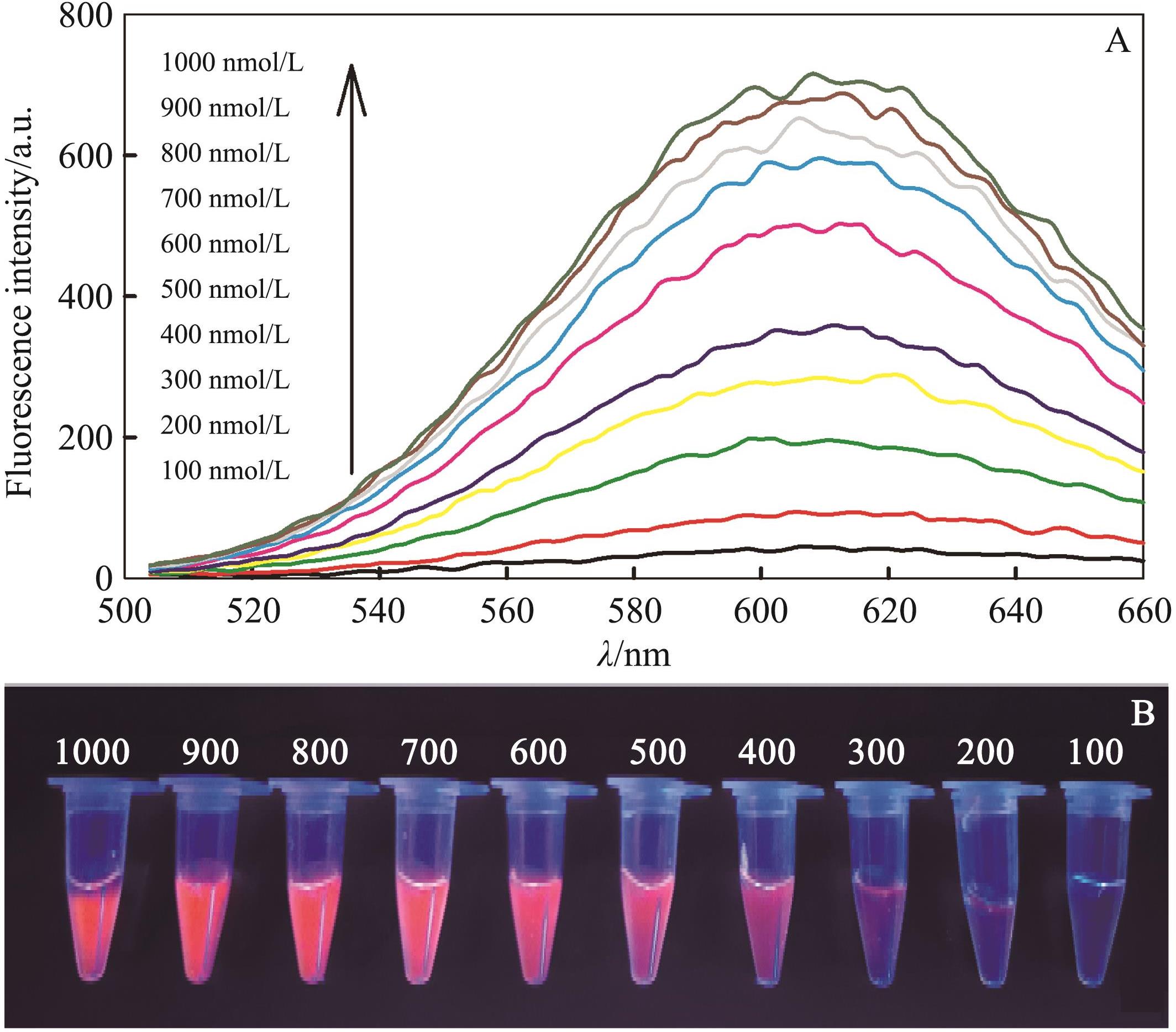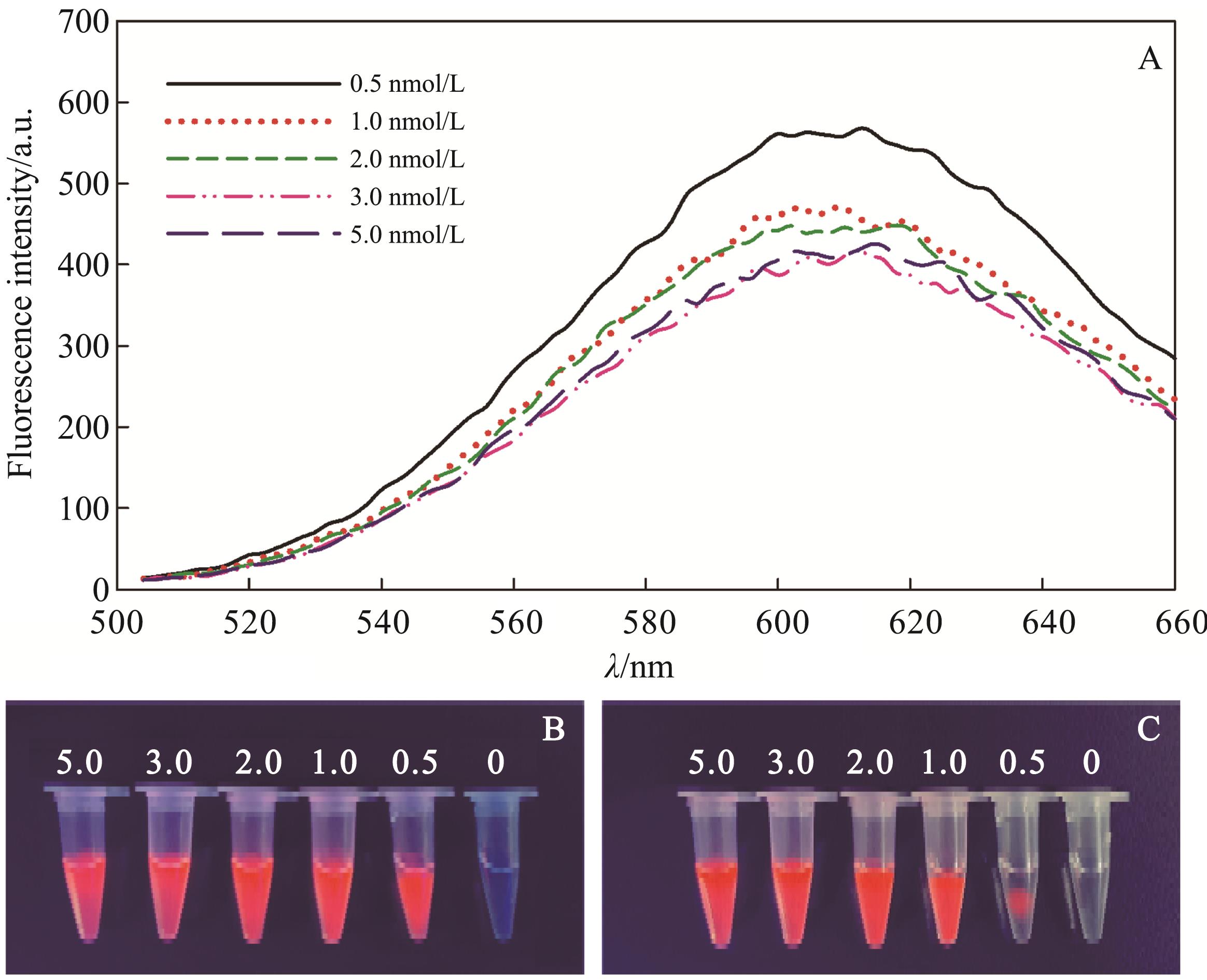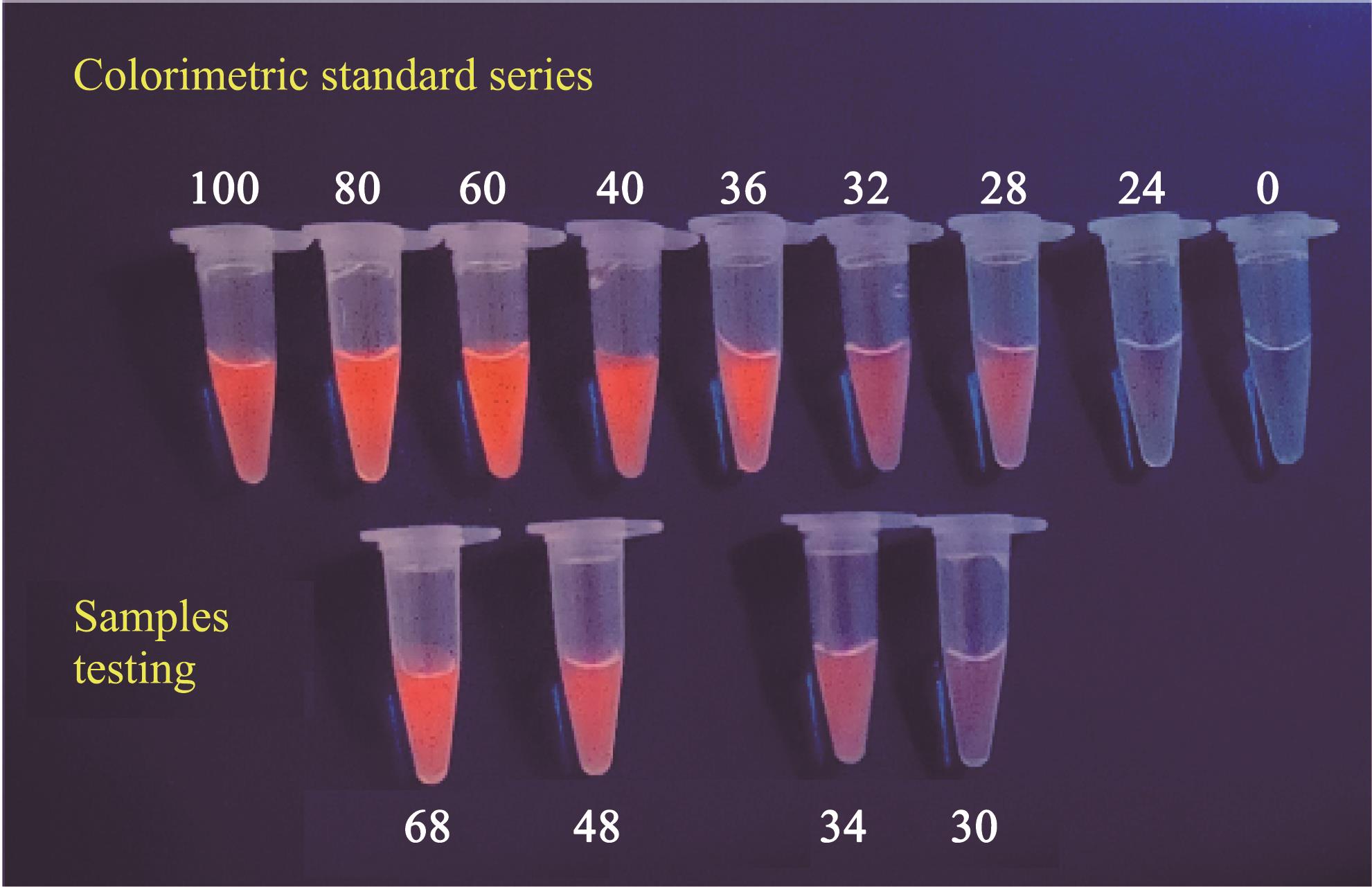| 1 |
TCHOUNWOU P B, YEDJOU C G, PATLOLLA A K, et al. Molecular, clinical and environmental toxicology[M]. Basel: Springer, 2012: 133-164.
|
| 2 |
黄晓桐, 陈颖欣, 朱泽滨, 等. 基于纳米材料光谱分析法检测抗坏血酸的研究进展[J]. 应用化学, 2021, 38(6): 637-650.
|
|
HUANG X T, CHEN Y X, ZHU Z B, et al. Reserch progress on detection of ascorbic acid by nonamaterial based special analysis method[J]. Chinese J Appl Chem, 2021, 38(6): 637-650.
|
| 3 |
XU F Z, QING T P, QING Z H. DNA-coded metal nano-fluorophores: preparation, properties and applications in biosensing and bioimaging[J]. Nano Today, 2021, 36: 101021.
|
| 4 |
刘剑波, 羊小海, 何晓晓, 等. 荧光纳米颗粒的化学与生物传感[J]. 中国科学:化学, 2011, 54(8): 1157-1176.
|
|
LIU J B, YANG X H, HE X X, et al. Chemical and biosensing of fluorescent nanoparticles[J]. Sci China: Chem, 2011, 54(8): 1157-1176.
|
| 5 |
张申, 郭玉玉. 一锅法合成聚乙烯吡咯烷酮修饰的铜纳米团簇用于槲皮素的检测[J]. 应用化学, 2020, 37(9): 100-106.
|
|
ZHANG S, GUO Y Y. One pot synthesis of fluorescent polyvinyl pyrrolidone stabilized Cu nanoclusters for the determination of quercetin[J]. Chinese J Appl Chem, 2020, 37(9): 100-106.
|
| 6 |
QING Z H, BAI A L, XING S H, et al. Progress in biosensor based on DNA-templated copper nanoparticles[J]. Biosens Bioelectron, 2019, 137: 96-109.
|
| 7 |
PANG J W, LU Y X, GAO X Y, et al. Single-strand DNA-scaffolded copper nanoclusters for the determination of inorganic pyrophosphatase activity and screening of its inhibitor[J]. Microchim Acta, 2020, 187(12): 672.
|
| 8 |
ZHOU Y L, LV Y B, DONG H, et al. Ultrasensitive assay of amyloid-beta oligomers using Au-vertical graphene/carbon cloth electrode based on poly(thymine)-templated copper nanoparticles as probes[J]. Sens Actuators B: Chem, 2021, 331: 129429.
|
| 9 |
LI L, LIU T, WANG M F, et al. Snowflake-like DNA crystals templated Cu clusters as a fluorescent turn-on probe for sensing actin[J]. Anal Chim Acta, 2021, 1173: 338700.
|
| 10 |
LIN Y S, LIN Y F, NAIN A, et al. A critical review of copper nanoclusters for monitoring of water quality[J]. Sens Actuators Rep, 2021, 3: 100026.
|
| 11 |
CHEN J Y, WANG M K, ZHOU X B, et al. Highly sensitive label-free fluorescence determination of lymphotropic virus DNA based on exonuclease assisted target recycling amplification and in⁃situ generation of fluorescent copper nanoclusters[J]. Sens Actuators B: Chem, 2021, 326: 128847.
|
| 12 |
KIM S, PARK K S. Fluorescence resonance energy transfer using DNA-templated copper nanoparticles for ratiometric detection of microRNAs[J]. Analyst, 2021, 146: 1844-1847.
|
| 13 |
欧丽娟, 罗建新, 孙爱明, 等. 基于对荧光铜纳米簇合成的抑制检测三聚氰胺[J]. 分析化学, 2017, 45(8): 1233-1237.
|
|
OU L J, LUO J X, SUN A M, et al. Lable-free fluorescencet detection of melamine based on its inhibition on synthesis of copper nanoclusters[J]. Chinese J Anal Chem, 2017, 45(8): 1233-1237.
|
| 14 |
CHAI Q L, WAN Y Q, ZOU Y Y, et al. Ultrasensitive and turn-on homogeneous Hg2+ sensing based on a target-triggered isothermal cycling reaction and dsDNA-templated copper nanoparticles[J]. Anal Methods, 2021, 13(31): 3521-3526.
|
| 15 |
AN Y, REN Y, BICK M, et al. Highly fluorescent copper nanoclusters for sensing and bioimaging[J]. Biosens Bioelectron, 2020, 154: 112078.
|
| 16 |
ROTARU A, DUTTA S, JENTZSCH E, et al. Selective dsDNA-templated formation of copper nanoparticles in solution[J]. Angew Chem Int Ed, 2010, 49: 5665-5667.
|
| 17 |
QING Z H, HE X X, HE D G, et al. Poly(thymine)-templated selective formation of fluorescent copper nanoparticles[J]. Angew Chem Int Ed, 2013, 52: 9719-9722.
|
| 18 |
QING T P, QING Z H, MAO Z G, et al. dsDNA-templated fluorescent copper nanoparticles: poly(AT-TA)-dependent formation[J]. RSC Adv, 2014, 4: 61092-61095.
|
| 19 |
NOGUERA M, BERTRAN J, SODUPE M. Cu2+/+ cation coordination to adenine-thymine base pair. effects on intermolecular proton-transfer processes[J]. J Phys Chem B, 2008, 112: 4817-4825.
|

 ), Hua-Ying TANG1, Wu-Hui LIU1, Yi-Feng JIANG1, Wen-Kai LI1, Xian-Hai LU1
), Hua-Ying TANG1, Wu-Hui LIU1, Yi-Feng JIANG1, Wen-Kai LI1, Xian-Hai LU1
